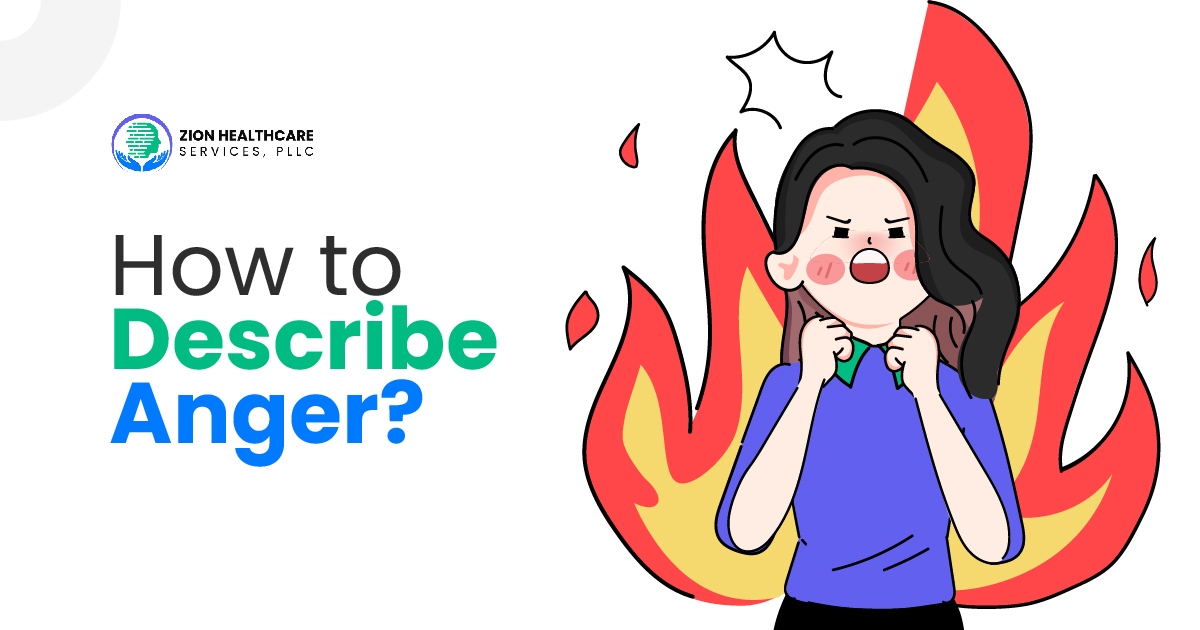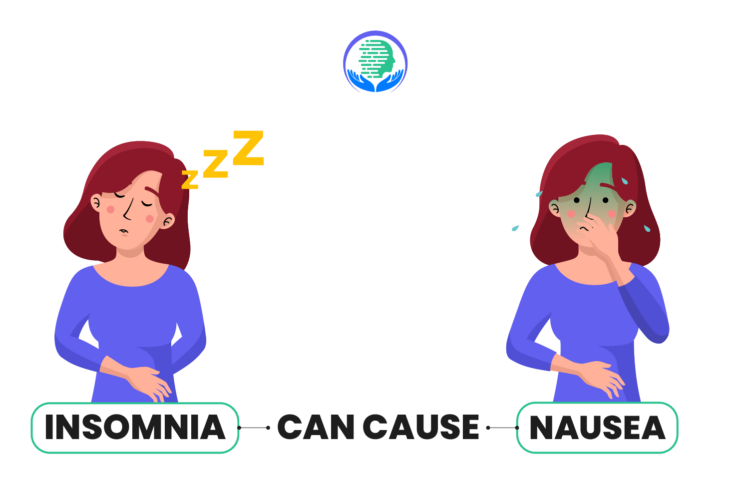
Being angry is hard to instant control. You feel bad later when you show someone you are mad. The best thing is to learn how to describe anger feelings and manage it adequately.
Sometimes, you want to tell people how mad you get but don’t know how. Don’t be scared! Zion Healthcare Services is here to help you.
If anger comes a lot or ruins your day, come talk to us. We will listen without being mean. Telling us how you feel inside can help make it better.
We know pain and anger feels unpleasant. That’s why we want to help you not get mad or stay mad. You don’t have to deal with it all by yourself. Come talk so we can help you calm down when you are angry.
What is Anger?
Anger is when you feel mad or upset because something didn’t go how you wanted or you think something is unfair with angry emotion. It makes your heart beat faster and your muscles tense. People show anger differently, like with their bodies or by talking.
It’s a normal feeling, but it’s important to learn how to handle it so it doesn’t cause problems in relationships or how you feel overall.
Well, explaining more about the anger definition; anger is a feeling that happens when something upsets you or isn’t fair. It’s how your body responds to things it doesn’t like.
Everyone gets angry, but it’s important to instant control provoking anger with big breaths or talking nicely with some professional.
Don’t be afraid to contact us, as we are available where you can explain your anger instead of expressing it. We care about how you feel and want to help make it happier. You won’t be in trouble for feeling angry. Just tell us how we can help so you don’t always have to feel mad.
A Step-By-Step Guide for Anger Management
The physiology of anger is a strong feeling, and sometimes it’s hard to explain how to describe anger. But learning to talk about anger helps others understand how you feel.
Step 1: Understand How Strong the Feeling Is
Start by figuring out how strong your anger is. Is it just a bit frustrating, or is it mad? This helps set the tone for your explanation.
Step 2: Notice How Your Body Feels
Look at your body to see what it’s doing when you’re angry. Are your face and hands getting tense? Are you breathing faster? These are signs that show how your body feels.
Step 3: Look at Your Face
Check your face in the mirror or think about how it looks. Does your forehead scrunch up? Do your eyes get narrow? These are healthy expressions that show others angry expression.
Step 4: Use Simple Words to Explain
Choose words that are easy to understand. Instead of saying “angry,” you can say “really, really mad” or “upset.” This helps others get a clear picture of your feelings.
Step 5: Compare Your Feelings
Make your explanation more interesting by comparing your anger to something everyone knows. You can say it’s like a volcano about to explode or like a fire getting bigger.
Step 6: Show Your Feelings with Your Body
Explain how your body moves when you’re angry. Do you stomp your feet or use your hands a lot? This helps others see what you’re feeling.
Step 7: Talk About What’s Happening Inside You
Describe what’s happening inside your body. Is your chest getting warm? Is your heart beating fast? These are things that tell others how strong your anger is.
Step 8: Say What Made You Feel This Way
Tell others what made you angry. Did something happen, or did someone do something? Explaining this helps others understand why you feel the way you do.
Step 9: Use Words People Say When They’re Angry
If you can, use words people might say when they have angry expression. This makes your explanation more real. For example, “I’m mad” or “I’m upset.”
Step 10: Explain What Happens After
Share what happens next. Do you calm down quickly, or does the feeling stay for a while? This helps others know how long your festering anger lasts.
Step 11: Think About Who You’re Talking To
Remember who you’re talking to and adjust your words. If it’s a friend, you might use different words than if you’re talking to a teacher. This helps your words connect better with the person listening.
Feel free to reach out to Zion Healthcare Services for supportive anger management treatment.
We are here to assist you, providing care and guidance to help you navigate through challenging moments and find a path towards a more peaceful world within yourself.
How to Describe Anger in Writing?
Focus on how to describe anger, heart pounding, face flushed, muscles tense. Use vivid verbs and sensory details to bring anger to life.
Show the intensity escalating over time by writing anger somewhere. Let actions speak louder than words in conveying a character’s growing angry emotion.
- Talk about how the body feels. Say how the heart beats fast, the face gets warm, hands squeeze hard, muscles get tight, and the breath gets loud.
- Use fun words. Words like “super mad” or “ready to blow” help the reader see it better. Compare assertive anger to hot things like fire or steam.
- Show how big the anger is. Slowly make the anger get worse – from a little mad to madder to very angry.
- Draw a picture with words, not just say, “He has an angry expression.” Say what they do, like talking short words loudly or stomping around. This helps the reader see it.
- Compare angry to calm. Quickly say how the person acts happy before they get mad so the change is clear.
A Metaphor for Anger
Here are a few metaphor for anger;
- A simmering pot of water, anger builds slowly and silently before boiling over.
- A volcano erupts sudden, explosive outbursts after holding emotions inside for too long.
- Fire in the blood, his body feels hot, like burning rage coursing through the veins.
- A storm was brewing, dark, and mounting tension in the atmosphere before emotional lightning struck.
If you are scrolling for someone who gives you anger management counseling near me, you may visit Zion Healthcare Services.
Breathing Exercises for Anger
Slow, deep belly breathing and other mindfulness techniques can counter the body’s fight-or-flight response and aid in healthily releasing underlying tension or visible frustration.
- Deep belly breathing
- 4-7-8 breathing
- Pursed-lip breathing
- Box breathing
- Progressive muscle relaxation
Frustration Versus Anger
Here is some information related to frustration vs anger.
| Frustration | Anger |
| The feeling of annoyance or exasperation | Strong feelings of displeasure and belligerence |
| Less intense emotion | More intense emotion that involves physiological arousal |
| Mild desire for change or obstacle removal | Strong desire to confront or blame the perceived source |
| Expression may involve sighing or mild complaining | The expression may involve yelling, aggressive behavior, physical aggression |
| More likely to be short-lived | It can last longer if the cause is not addressed or physiological arousal is not reduced. |
Hypnotherapy for Anger Management
Hypnotherapy for anger management is like having a friendly guide for your mind. A trained person helps you relax deeply and talks to your subconscious mind about dealing with anger better.
It’s like planting positive thoughts so that when you look angry, you can use tricks to stay calm, like imagining a peaceful place.
Thus, it’s like training your mind to be a superhero against great anger, giving you more power to stay calm and handle tough situations.
If you are searching for anger management therapists near me, you may contact us!
Things that Represent Anger
Several things can symbolize or represent anger, capturing its essence in different forms. Here are some common representations of anger:
- The intense and destructive nature of anger is often associated with the imagery of fire and flames.
- The turbulent and forceful qualities of storms and thunderstorms can represent the tumultuous nature of anger.
- Symbolic of the potential for harm, sharp objects like knives or pointed items can represent the aggressive and cutting aspects of anger.
- Animal behaviors, like growling or baring teeth, often depict anger’s primal and instinctual side.
- Visual representations of steam or smoke can evoke the idea of internal pressure and the need for release.
Common Triggers for Anger
Various situations and circumstances can trigger anger. Here are some common triggers for anger:
- Facing obstacles or feeling stuck in a situation can lead to frustration, which may escalate into anger.
- Feeling treated unfairly or witnessing injustice can provoke a strong emotional response.
- Harsh criticism or negative feedback can trigger defensive emotions, contributing to anger.
Benefits of Anger Management
Learning to instant control anger has good things that can help you and your relationships. Here are some simple benefits:
- Better friends and family
- Talking better
- Feeling better in your body
- Solving problems easier
- Feeling stronger inside
- Not getting sick easily
The Bottom Line
Using these easy steps, you can tell others how to describe anger in a way that makes them understand and helps you better. Sharing your feelings with simple words bridges what you feel inside and what others can see, making it easier for everyone to connect and talk. And remember, if you ever need more help, Zion Healthcare Services is here for you, ready to support you on your journey to better emotional well-being.


